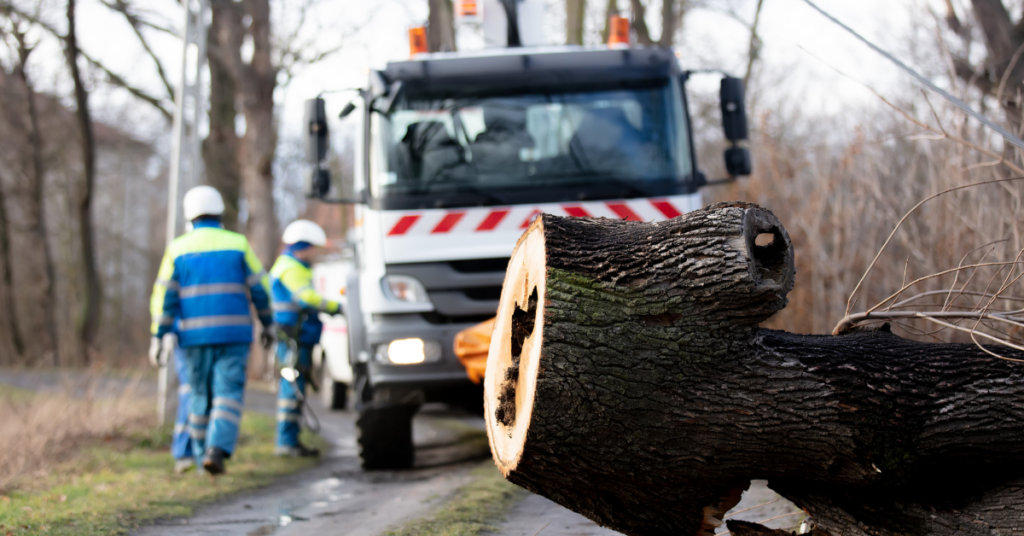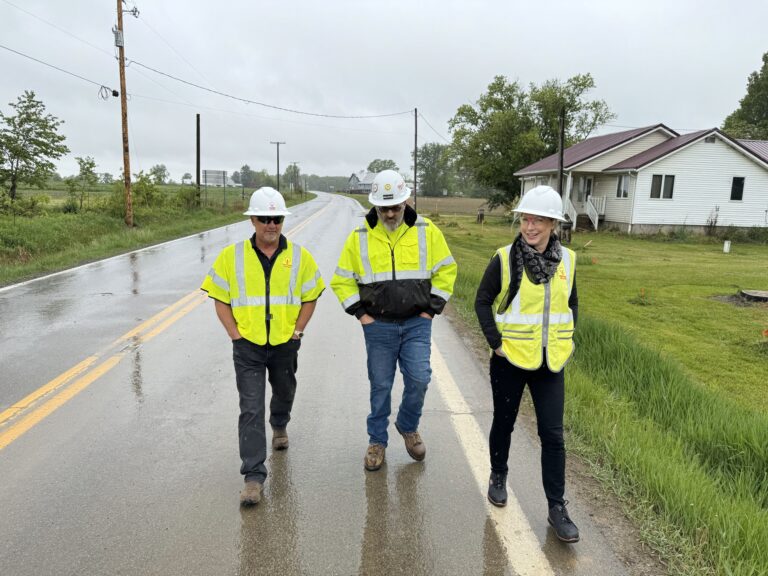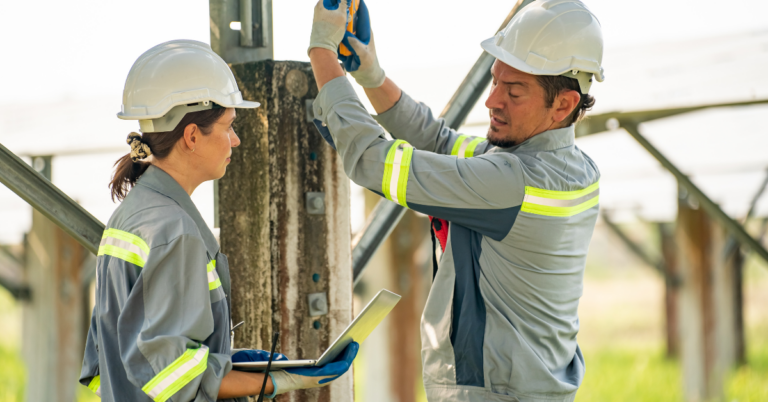When severe storms strike, they don’t just disrupt daily life—they shut down businesses, endanger public safety, and leave communities in the dark. For utilities, the difference between a swift recovery and prolonged outages often comes down to crew mobilization—how quickly and efficiently personnel, equipment, and resources are deployed to restore power.
In recent years, extreme weather events have intensified, increasing the urgency for utilities to refine their response strategies. Without a well-coordinated mobilization plan, even the most advanced restoration efforts can falter, leading to widespread frustration, regulatory scrutiny, and financial losses. Conversely, a well-executed plan enables utilities to minimize downtime, improve customer confidence, and enhance grid resilience.
A well-executed storm response depends on how effectively utilities mobilize their crews. This article breaks down the key logistical, operational, and regulatory challenges they face and highlights strategies that enhance storm recovery efforts.
Why Crew Mobilization is the Cornerstone of Storm Recovery
The first 24 to 72 hours after a major storm are pivotal. Utilities that can mobilize response teams within this timeframe significantly reduce outage durations, while those that struggle to coordinate crews risk delays that compound customer dissatisfaction and operational setbacks.
Preparation plays a key role. The most effective utilities invest in year-round readiness, maintaining emergency response rosters, securing mutual aid agreements, and conducting regular training exercises to refine their ability to scale workforce deployment.
Large-scale storm recovery often requires a nationwide effort, with mutual aid crews traveling from multiple states to support local restoration efforts. Beyond hurricanes, other extreme weather events—including ice storms, wildfires, and derechos—can cause widespread outages that require rapid mobilization. The ability to scale quickly and efficiently is no longer a luxury—it’s a necessity.
Challenges in Crew Mobilization During Storm Recovery
While utilities recognize the importance of rapid crew deployment, several challenges can hinder mobilization efforts:
1. Assessing Damage and Deployment Needs
Immediately after a storm, utilities must determine how many crews are needed and where to send them. This assessment can be difficult when infrastructure damage is widespread, communications are down, and road access is blocked. Advanced damage assessment tools, such as drones and AI-driven predictive models, are helping utilities make faster, more informed decisions.
2. Surge Capacity and Mutual Aid
Utilities cannot maintain a workforce large enough to handle every potential disaster. Instead, they rely on mutual aid agreements and private contractors to scale up quickly. However, competition for these resources intensifies when multiple utilities are affected by the same storm, leading to potential delays in crew availability.
3. Logistics and Staging
Crews must be housed, fed, and equipped with fuel and materials. Poor planning in these areas can leave workers idle, waiting for supplies instead of restoring power. Ensuring seamless logistics—including designated staging areas and pre-arranged supply chains—is as critical as deploying the right number of personnel.
4. Communication and Coordination
During major storm responses, utilities must integrate their local crews with outside mutual aid teams and contractors. Without clear communication and real-time tracking, misallocation of crews, duplication of efforts, or gaps in coverage can slow down recovery efforts. Digital workforce management systems and centralized storm response centers have helped leading utilities overcome this challenge.
5. Worker Safety and Fatigue
Storm restoration work is inherently hazardous. Crews work long hours under difficult conditions—navigating downed power lines, unstable infrastructure, and hazardous weather. Balancing productivity with safety is essential to prevent accidents and fatigue-related errors. Strict adherence to work/rest guidelines and continuous safety training are key to maintaining efficiency without compromising well-being.
6. Regulatory and Cost Recovery Requirements
Utilities must document crew hours, expenses, and restoration efforts for compliance and cost recovery purposes. Without accurate tracking, companies may struggle to justify recovery costs to regulators or secure disaster aid funding. Leveraging digital documentation tools ensures transparency and reduces administrative delays.
Best Practices for Effective Crew Mobilization
Leading utilities implement proactive strategies to ensure rapid, efficient, and safe crew deployment. Key best practices include:
1. Pre-Staging Crews and Equipment
Utilities that pre-position crews, trucks, and materials near expected impact zones can begin restoration work immediately after conditions permit. This approach dramatically shortens response times compared to mobilizing resources after a storm has already passed.
2. Strengthening Mutual Aid Agreements
A well-defined mutual aid framework enables utilities to quickly request and deploy external crews. These agreements should outline terms, rates, logistics, and operational expectations to eliminate delays caused by last-minute negotiations.
3. Leveraging Predictive Analytics
Advanced storm forecasting models help utilities predict where the most severe damage will occur, allowing for better crew allocation before a storm even makes landfall. AI-driven analytics can refine deployment strategies in real time based on evolving conditions.
4. Implementing Real-Time Crew Tracking
GPS-enabled workforce management systems allow utilities to monitor crew locations, assignments, and progress in real time. These platforms improve situational awareness, prevent duplication of effort, and ensure efficient task distribution.
5. Streamlining Logistics and Crew Support
Ensuring that crews have adequate fuel, food, lodging, and equipment reduces downtime and improves efficiency. Some utilities establish centralized staging areas with stocked supplies, reducing reliance on disrupted local infrastructure.
6. Conducting Post-Storm Reviews
After every major storm, utilities should analyze their response performance, identifying successes and areas for improvement. Lessons learned should be incorporated into future planning, strengthening preparedness for the next event.
Conclusion
Crew mobilization is the defining factor in storm recovery. In today’s world of increasing climate risks and heightened customer expectations, utilities cannot afford inefficiencies in workforce deployment. By adopting proactive mobilization strategies, leveraging technology, and strengthening mutual aid partnerships, utilities can improve restoration times and enhance grid resilience.
As severe weather events become more frequent, the utilities that invest in fast, organized, and scalable mobilization strategies will lead the way in power restoration. When the next storm hits, the effectiveness of crew mobilization will determine whether communities experience prolonged outages—or a swift return to normal.



